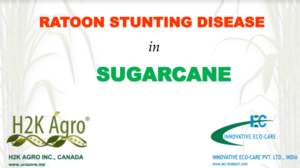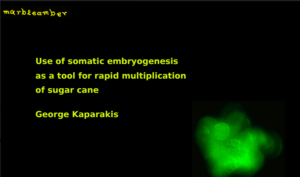Introduction
More than 40 years ago one of our Caribbean political leaders declared that the sugar industry in the region was a “dead horse” and another expressed the wish to see the day when there was not a “cane blade” in Barbados. The reality is that the sugar cane in particular, and agriculture in general, remains critical to the agro-industrial output of Barbados and has the potential to be a modern prop for our 21st century economy.
The contribution of agriculture to an economy is often undervalued since the agro-industrial activity related to the agriculture is seldom recognized. An agro-industrial complex includes input manufacturing, distribution, marketing and supply together with the agricultural product storage handling, processing, transport, marketing and distribution. In such a complex the agricultural or farm gate value itself is seldom more than 20% of the total market value. The value added is four times that of the agriculture itself, but without the agriculture there can be no value added. Research has shown that a dollar spent in agriculture is recycled on average six times in an economy which is more than that in any other sector. This is why the developed countries have no problem supporting and subsidizing their agriculture.
Background
Barbados covers 166 square miles or just over 106,000 acres. About 70,000 acres of this were formerly suitable for agriculture (arable) of which about 10,000 of those arable acres were in the Scotland district. The other 36,000 acres were mostly “rab” land, swamps, coastal pastures and built on.
At the peak of the sugar industry in Barbados (1970) as much as 65,000 acres of the agricultural land were cultivated in sugar cane of which roughly 50,000 acres were harvested annually with the remaining 15,000 acres in food and other crops being rotated on fallow sugar cane lands.
Agricultural land has been the least expensive of all the land with development potential and therefore the target of developers and “changed in use” for building and other “development” purposes. In 2007 a Town and Country Planning Department report indicated that, up to that time, change of use permission had been granted for about 30,000 acres of agricultural land leaving about 40,000 acres for agriculture. This was misleading because several sub-divisions of agricultural land for small farms had not been counted as “changed in use” but had since become housing developments (Sandford, Rowans, Cottage, et al).
In any case, there was still about 30,000 acres of agricultural land available for agriculture at that time.
In 1971, the Government of Barbados approved legislation titled the Sugar Industry Act (1971) which gave it the power to surcharge/tax/huff all windfall profits in the industry and to legislate wage levels for the industry, both of which it subsequently did. The tax of windfall profits in 1974 and 1981 amounted to more than $50 million (at a time when $1.00 could buy more than 10 times what it could buy today) and wage levels were increased by more than 100% in 10 years.
At the same time, the Government’s agricultural policy promoted crop diversification from sugar cane and the Ministry of Agriculture withdrew its support for the sugar industry.
Without the windfall profits, which had previously kept the industry alive, coupled with the increasingly high operating costs, all private investment in the industry dried up and by 1990, 26 of the sugar plantations were heavily indebted to the Barbados National Bank.
In 1992, the Government established the Barbados Agricultural Credit Trust (BACT), a state corporation, to which it transferred the huge sugar industry debt from the Barbados National Bank. The Government also established the Barbados Agricultural Management Company (BAMC), another state corporation, to manage the industry. BAMC subsequently leased the 26 “heavily indebted” plantations so that they could continue to cultivate them in sugar cane rotated with other crops. BAMC also took over the management of the six sugar factories operating at the time.
Since then, the debts of 23 of the heavily indebted plantations have been cleared by the owners. This leaves a residual debt that cannot justify the continued existence of BACT and in 2007 recommendations were made to the Government that BACT, which has a significant annual operating cost should be closed. BACT is still in existence.
All through the 1960s, Barbados production averaged over 30 tons of cane, or about 4.0 tons of sugar, per acre. This productivity has declined continuously since then and now averages less than 20 tons of cane or 2.0 tons of sugar per acre. Two sugar factories are still being kept in operation at great, unnecessary expense as one would suffice. The factories are operating inefficiently with upwards of 50 % down time resulting in significant sugar losses.
Strengths
Sugar Cane is a grass, ideally suited to Barbados soils and climate (variable rainfall and temperature) with great soil erosion control which serves to improve the soil and control weeds, more so than any crop (i.e. other than another grass).
No other crop which can be grown in Barbados at the potential scale (> 10 thousand acres) of sugar cane can earn the equivalent in external/border value (equivalent foreign exchange) per acre.
A wide range of products can be manufactured from the sugar cane (sugar, candy/confectionaries, molasses/ethanol/rum and electricity) which can all be marketed and consumed locally in Barbados. In addition, there is a product flexibility which allows the quantities to be adjusted to market demand.
Barbados has a familiar tradition of growing sugar cane and processing it into sugar and a resulting wide knowledge base in its production. There is already a significant investment in the production infrastructure for the sugar cane and sugar but it urgently needs a change in focus from an export market to the local market. This can be achieved by a simple downsizing with a focus on improving productivity of what is already there.
The sugar cane is a great supporting crop for most other crops which can utilize the sugar cane infrastructure while being rotated with the cane. In effect, the sugar cane has been the foundation of Barbados agriculture.
Weaknesses
In the past the Barbados sugar industry has been focused on bulk sugar for export with a molasses bi-product consumed locally in the manufacture of rum. However, the vulnerability of the Barbados sugar industry to world market conditions and the reality of the loss of the EU Preferential Quota regime (in 2007?) have necessitated urgent action for product diversification within the industry and a change in focus from export to the local market. This has not happened yet.
High operating costs and low productivity currently characterize an industry with high financial losses (>$100 million per year) and low morale that is still operating under the “draconian” 1971 Sugar Industry Act.
The industry has had little to no research support and lots of talk but little effort has been made in recent years to improve productivity.
The sugar industry is being managed by a state owned corporation and “quasi-civil servants” whose compatriots were described 40 years ago as an “army of occupation”. Despite continuous complaints by the general public, this “army” has made no effort to improve productivity, with the Government’s top down “reform” attempts achieving little more than cosmetic changes and a disheartened Reform Unit.
The quasi-civil servants in BAMC, far from promoting productivity, have moved to remuneration based on “time” in an industry where remuneration is based worldwide on productivity.
BAMC is currently producing sugar cane at twice the cost of independent/private growers in Barbados and the cost of sugar production is more than five times the import cost.
Opportunities
The sugar cane is the world’s most efficient crop in converting solar energy to stored energy. Only maize/corn and other grasses utilize the same or a similar carbon pathway in photosynthesis. The high costs of fossil fuels now boost the potential value of the sugar cane to higher levels not only for its bio-mass in co-generation but also for bio-fuel (ethanol) to power motor vehicles.
Sugar cane produces more bio-mass (mainly cellulose) per acre than any other crop (including river tamarind). Since cellulose is a polysaccharide consisting of a linear chain of thousands of linked glucose units (the basic chemical building block of ethanol from fermentation by yeast) the future potential of cellulosic ethanol from sugar cane is great – in theory bagasse can produce more than ten times the amount of ethanol as the equivalent amount of sugar (sucrose).
The technology for cellulosic ethanol has however not yet been developed to a financially feasible point and is unlikely to be achieved in the near future. Even then the patents of the developer will be too costly to make it financially feasible in the foreseeable future.
Brazil currently achieves yields of 400 liters of ethanol from a ton of bagasse utilizing an acid hydrolysis process to release the glucose units in the cellulose for fermentation. This volume of ethanol is roughly the same as can be produced (fermented) from a ton of sucrose. Unfortunately, the acid bi-product in the Brazil process is proving very expensive to dispose of and is environmentally unfriendly.
It is understood that an element of the private sector has made a preliminary offer to the Government to take over the management of the industry in Barbados. It is likely that this would involve a realistic downsizing but could result in a significantly more financially viable operation with reduced costs to the taxpayer.
Threats
The International Society of Sugar Cane Technologists (ISSCT) at its twenty-fifth International Congress held in Durban, South Africa in 2005, identified the smallest financially viable sugar industry in the world as one which cultivates 10,000 hectares or 25,000 acres in sugar cane. This suggests that there is a “minimum critical mass” requirement for a sugar industry which will vary depending on productivity, costs and prices, but we can safely assume that it is at least 25,000 acres for Barbados.
The concept of a minimum critical mass, with built in economies of scale, applies to each and every crop. Crop diversification failed in Barbados because markets are simply too small to justify anything near the minimum critical mass for any crop, other than sugar cane, unless there is an attractive export market.
It was for this reason that the 1994-2008 Government administration was committed to guaranteeing the sugar cane growers $100 per ton of cane in order for them to be encouraged to increase sugar cane cultivation from the 2007 level of 22,000 acres (of which 18,000 acres were harvested annually) to 30,000 acres in order to achieve the needed economies of scale and minimum critical mass.
Since 2008, sugar cane cultivation has shrunk to less than 18,000 acres of which about 10,000 acres were harvested this year (2013) and this area is continuing to shrink, with little or no attempt made by the Government to arrest it. The price paid to growers has also been cut and several promises for an additional cane payment have not been honoured.
The appetite of developers for cheap agricultural land continues unabated and the Town and Country Planning system in Barbados has not demonstrated the courage (or the integrity?) to resist the developers’ greed. Instead Barbadians have been fed the argument that a developed acre of land is worth many times the value of an acre of agriculture. This is misleading because it cherry picks the one option of agriculture or development, but this is not the only option. What about agriculture and development? We need to develop the thousands of acres of the non-agricultural land instead. The result is likely to be a continuing of the trend of dwindling availability of lands for agriculture in general and the sugar industry in particular.
Furthermore, the political concern that sugar must not be seen as “dying under our watch” could also cost the taxpayers of Barbados millions in a vain attempt by the Government of the day to keep it alive if only in intensive care.
Conclusions
Can Barbados justify the huge investment needed ($400 million) to diversify the sugar industry given the limited and shrinking area available for cultivation of sugar cane and the poor productivity that exists?
What is the likelihood that the quasi-civil servants managing the industry can increase productivity after twenty one years of decline under their management?
Will the Government have the courage to “improve” the legislation under which the industry operates and/or allow the private sector to take it over?
The answers to these questions will determine the future of the sugar and agricultural industries in Barbados.
Peter Webster
Note: Peter Webster is a retired Portfolio Manager of the Caribbean Development Bank and a former Senior Agricultural Officer in the Ministry of Agriculture.


